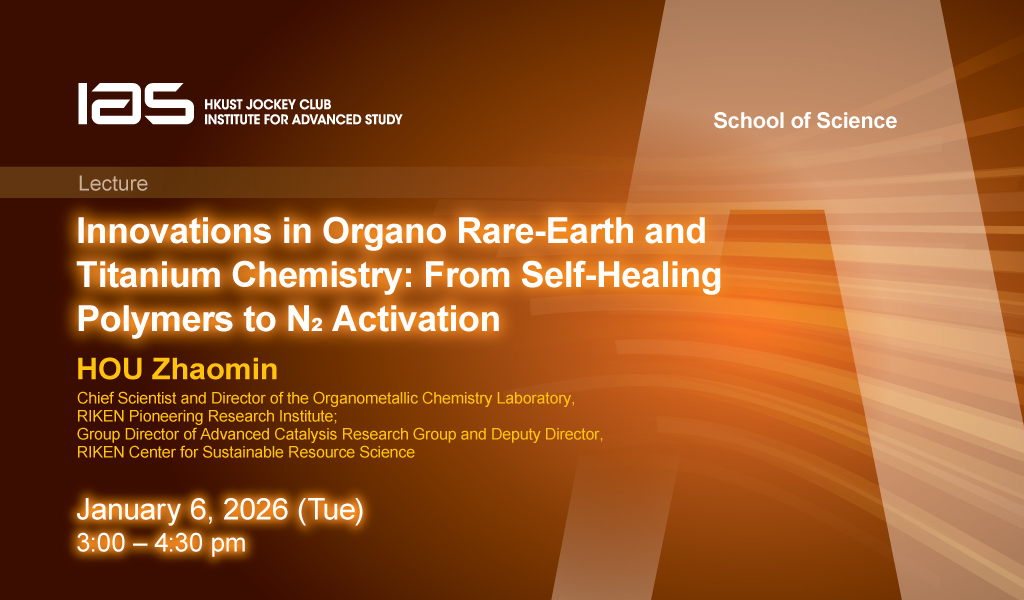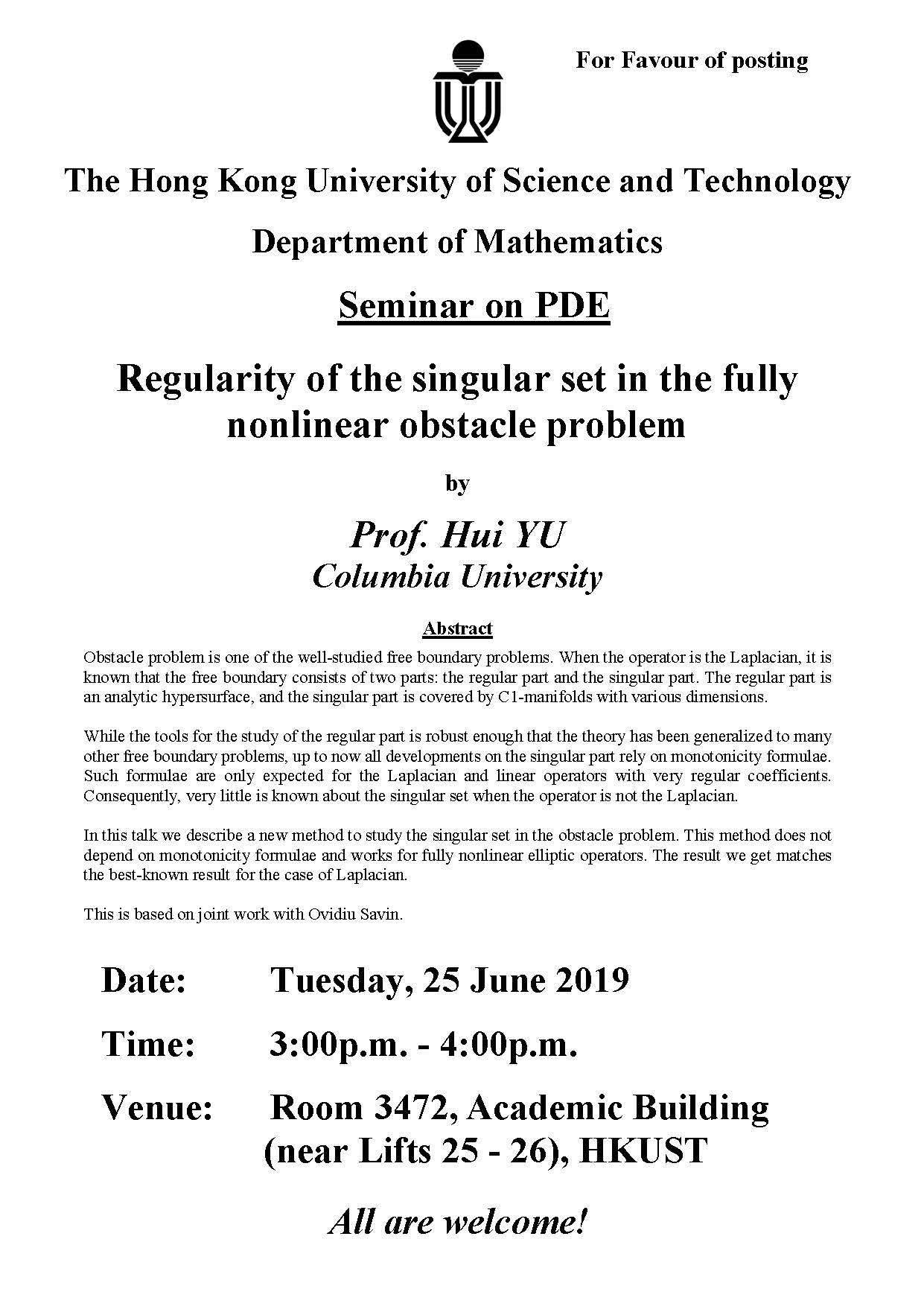More about HKUST
Obstacle problem is one of the well-studied free boundary problems. When the operator is the Laplacian, it is known that the free boundary consists of two parts: the regular part and the singular part. The regular part is an analytic hypersurface, and the singular part is covered by C1-manifolds with various dimensions. While the tools for the study of the regular part is robust enough that the theory has been generalized to many other free boundary problems, up to now all developments on the singular part rely on monotonicity formulae. Such formulae are only expected for the Laplacian and linear operators with very regular coefficients. Consequently, very little is known about the singular set when the operator is not the Laplacian. In this talk we describe a new method to study the singular set in the obstacle problem. This method does not depend on monotonicity formulae and works for fully nonlinear elliptic operators. The result we get matches the best-known result for the case of Laplacian. This is based on joint work with Ovidiu Savin.
25 Jun 2019
3:00pm - 4:00pm

Where
Room 3472, Academic Building (near Lifts 25 - 26)
Speakers/Performers
Prof. Hui YU
Columbia University
Columbia University
Organizer(S)
Department of Mathematics
Contact/Enquiries
mathseminar@ust.hk
Payment Details
Audience
Alumni, Faculty and Staff, PG Students, UG Students
Language(s)
English
Other Events

6 Jan 2026
Seminar, Lecture, Talk
IAS / School of Science Joint Lecture - Innovations in Organo Rare-Earth and Titanium Chemistry: From Self-Healing Polymers to N2 Activation
Abstract
In this lecture, the speaker will introduce their recent studies on the development of innovative organometallic complexes and catalysts aimed at realizing unprecedented chem...

5 Dec 2025
Seminar, Lecture, Talk
IAS / School of Science Joint Lecture - Human B Cell Receptor-Epitope Selection for Pan-Sarbecovirus Neutralization
Abstract
The induction of broadly neutralizing antibodies (bnAbs) against viruses requires the specific activation of human B cell receptors (BCRs) by viral epitopes. Following BCR activation, ...

